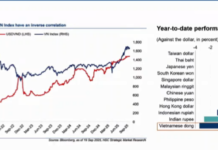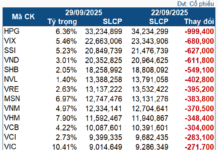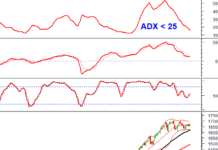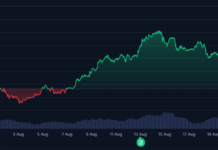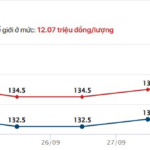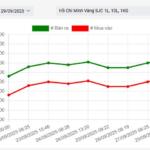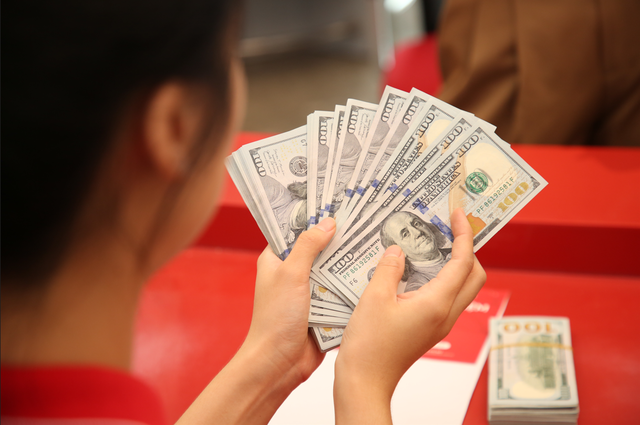Amid soaring SJC gold prices, significantly outpacing global rates by nearly 15 million VND per tael, consumers continue to queue up at major enterprises to purchase gold. The State Bank of Vietnam has recently announced a draft circular guiding Decree 24/2012/NĐ-CP on gold trading activities, amended and supplemented by Decree 232/2025/NĐ-CP, set to take effect from October 10. The draft includes provisions for importing raw gold for the production of gold bars.
No Free Importation Allowed
The draft stipulates that by November 15 each year, licensed entities must submit their annual gold import quota requests to the State Bank. The State Bank will then allocate import quotas based on monetary policy objectives, market supply and demand, and foreign exchange reserves. Eligible enterprises and commercial banks will receive their quotas by December 15 annually.
However, according to Decree 232/2025/NĐ-CP, to import gold, gold bar trading or manufacturing companies must have a minimum charter capital of 1 trillion VND. Commercial banks involved in gold imports require a minimum charter capital of 50 trillion VND. Additionally, jewelry manufacturers must possess a certificate of eligibility for jewelry production and valid processing contracts.
In an interview with Người Lao Động newspaper on September 30, several businesses and experts expressed concerns that the draft circular’s requirements, if effective from October 10, would leave little time to prepare and submit import and production license applications by the November 15 deadline. “Many companies are holding their breath until October 10, awaiting the list of entities eligible to import raw gold and produce gold bars,” said the CEO of a gold company in Ho Chi Minh City.
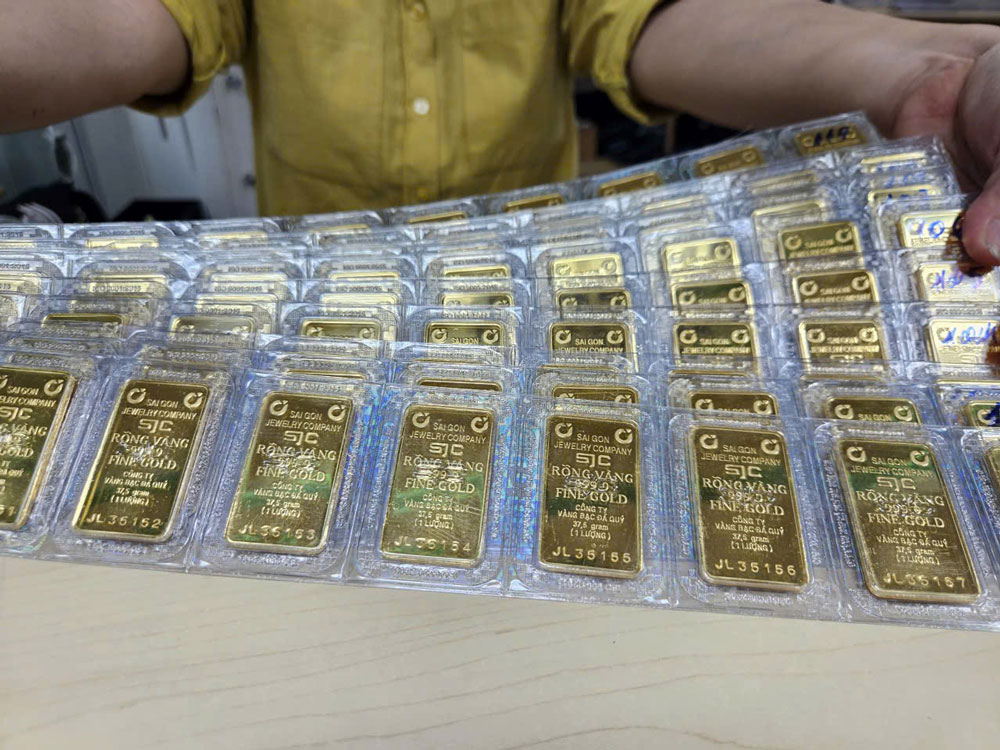
Expedited licensing for raw gold imports is expected to cool domestic gold prices. Photo: LAM GIANG
Huỳnh Trung Khánh, Vice Chairman of the Vietnam Gold Business Association and Senior Advisor to the World Gold Council in Vietnam, noted that both Decree 232 and its guiding circular taking effect on October 10 demonstrate the regulator’s commitment to addressing long-standing market inefficiencies.
However, Khánh pointed out that the capital requirements in the decree would limit the number of eligible companies. “Only a few large gold companies like SJC, DOJI, PNJ, or some commercial banks with prior gold bar production experience may qualify. Many other banks will need to invest in machinery, brand building, and marketing strategies to compete with SJC,” he explained.
From another perspective, Trần Hữu Đang, CEO of ASEAN Jewelry Corporation (AJC), suggested allowing commercial banks and large enterprises to import gold and then distribute it to smaller units. This approach, he argued, would ensure sufficient raw materials for producing rings and jewelry, meeting the general public’s demand.
Reliance on Imported Supply
Many experts believe that once the raw gold import and gold bar production mechanism is implemented, SJC gold prices will decline and narrow the gap with global prices, rather than the current 15-16 million VND per tael difference. Gold expert Trần Duy Phương emphasized that Decree 232 and its accompanying circulars are a step in the right direction, addressing market bottlenecks. He noted that the State Bank’s centralized management of the gold market, allowing only SJC gold bars and restricting imports and exports, has limited supply and kept domestic prices significantly higher than international rates for years. “Decree 232 opens the door to international market integration, eliminates the monopoly on gold bars, and permits companies to import raw materials under strict State Bank approval. This is a positive signal, not just for gold bars but also for jewelry and rings, which currently face raw material shortages,” said Phương.
However, expert Nguyễn Ngọc Trọng cautioned that price reductions depend on the number of licensed companies and their import quotas. Companies must register their needs and request quotas, with the State Bank allocating based on market forecasts. “Simply announcing licensed importers could shift market sentiment and lower prices. However, the extent of the reduction and remaining gap with global prices will depend on the actual supply released,” added Trọng.
Meanwhile, Dr. Nguyễn Trí Hiếu questioned the USD availability for gold imports. Despite Vietnam’s limited foreign exchange reserves, he argued that the government must allocate funds for gold imports to stabilize the market. Prolonged supply shortages could keep domestic prices significantly higher than global rates. “This could drive investors toward gold instead of stocks, real estate, or savings. Consequently, not only the gold market but also other sectors could face cascading instability. High gold prices might also escalate commodity prices, fuel inflation concerns, and encourage gold hoarding, increasing smuggling risks and negatively impacting exchange rates and the macroeconomy,” analyzed Hiếu.
Global Gold Prices May Hit $4,000/Ounce
Global gold prices continued to rise, reaching $3,842/ounce on September 30, marking the strongest September gain in 14 years at 11.4%. Key drivers include concerns over a potential U.S. government shutdown and expectations of further Federal Reserve rate cuts.
In a climate of political uncertainty and low interest rates, gold remains a safe-haven asset. Peter McGuire, Director of Trading.com, described the current rally as “extremely impressive,” predicting gold could reach $4,000/ounce within 1-2 weeks. Additionally, central banks’ robust purchases, estimated at 80 tons/month or $8.5 billion, are bolstering prices. China and other nations are sustaining demand, pushing gold toward new historical highs.
X.Mai
Gold Price Today, September 28: Analysts Predict Continued Uptrend
Both analysts and experts forecast that global gold prices will continue to rise next week, yet they remain approximately 15 million VND lower than the SJC gold bar prices.
















